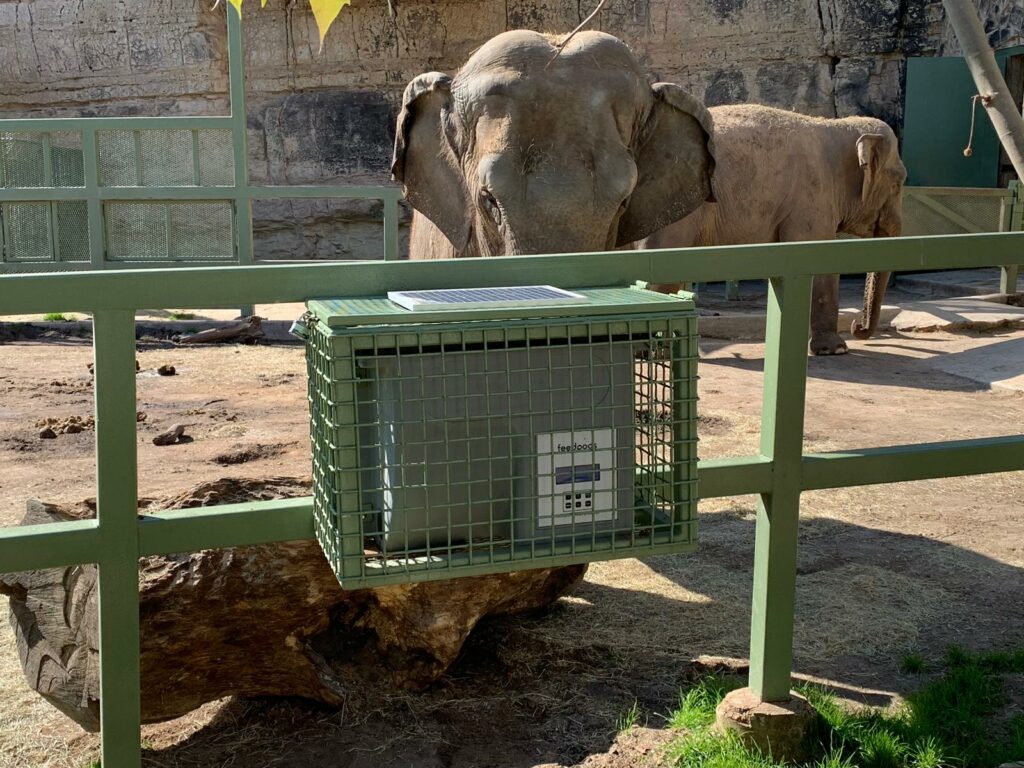A robotic feeding system for zoo animals should possess several key features to ensure efficient and effective feeding while prioritizing animal welfare. Here are some essential features to consider:
- Programmable Feeding Schedule: The robotic feeding system should allow for easy programming of feeding schedules tailored to each animal’s specific dietary requirements. This feature ensures that animals receive the appropriate amount and type of food at designated times, promoting balanced nutrition and health.
- Portion Control and Customization: The system should offer precise portion control capabilities, allowing zookeepers or caretakers to specify the exact amount of food to dispense for each animal. This feature ensures that animals receive accurate and consistent food portions, preventing overfeeding or underfeeding.
- Dietary Flexibility: Zoo animals often have diverse dietary needs, and the robotic feeding system should accommodate a wide range of food types, including pellets, fruits, vegetables, and specialized diets. This flexibility enables the system to cater to different species and individual animal requirements.
- Food Dispensing Mechanism: The feeding system should employ a reliable and efficient food dispensing mechanism. It should be designed to handle various food sizes and consistencies, ensuring smooth and controlled delivery of the feed. This feature minimizes food wastage and prevents jams or blockages within the system.
- Hygienic Design: To maintain optimal animal health, the robotic feeding system should incorporate hygienic design elements. It should have easily accessible and removable components for regular cleaning and sanitation. Antimicrobial materials or coatings can be utilized to inhibit bacterial growth and ensure food safety.
- Remote Monitoring and Control: An effective robotic feeding system should offer remote monitoring and control capabilities. This allows zookeepers or caretakers to oversee feeding operations, adjust settings, and monitor food consumption from a central control room or through a connected device. Real-time data and alerts can facilitate timely intervention if any issues arise.
- Animal Identification and Individualization: The system should incorporate features that enable animal identification and individualized feeding. This could include RFID (Radio-Frequency Identification) or similar technology to identify specific animals and provide personalized feeding plans. Individualization promotes tailored nutrition and helps monitor the eating habits and health of each animal.
- Safety Measures: Animal safety is paramount, and the robotic feeding system should include safety features to prevent accidents or harm. These may include motion sensors, obstruction detection mechanisms, and fail-safe systems to ensure animals and keepers are protected during feeding operations.
- Integration with Monitoring Systems: Seamless integration with existing animal monitoring systems can enhance overall animal care and welfare. The robotic feeding system should be capable of exchanging data with monitoring systems, allowing for comprehensive analysis of feeding patterns, consumption rates, and animal behavior.
- Data Logging and Analytics: The feeding system should have the capability to log feeding data, such as portion sizes, feeding times, and consumption rates. This data can be analyzed to track the animals’ dietary habits, monitor changes in appetite, and identify potential health issues. It can also assist in optimizing feeding protocols and evaluating the effectiveness of nutrition programs.
By incorporating these features, a robotic feeding system for zoo animals can streamline feeding operations, promote animal well-being, and support efficient animal care management within zoological settings.
Feedpods Interactive offers such solutions and would be happy to arrange a call to provide a virtual assessment of your park.
info@feedpods.com

Feedpods Interactive Elephant feeder with Solar Panel 2023
